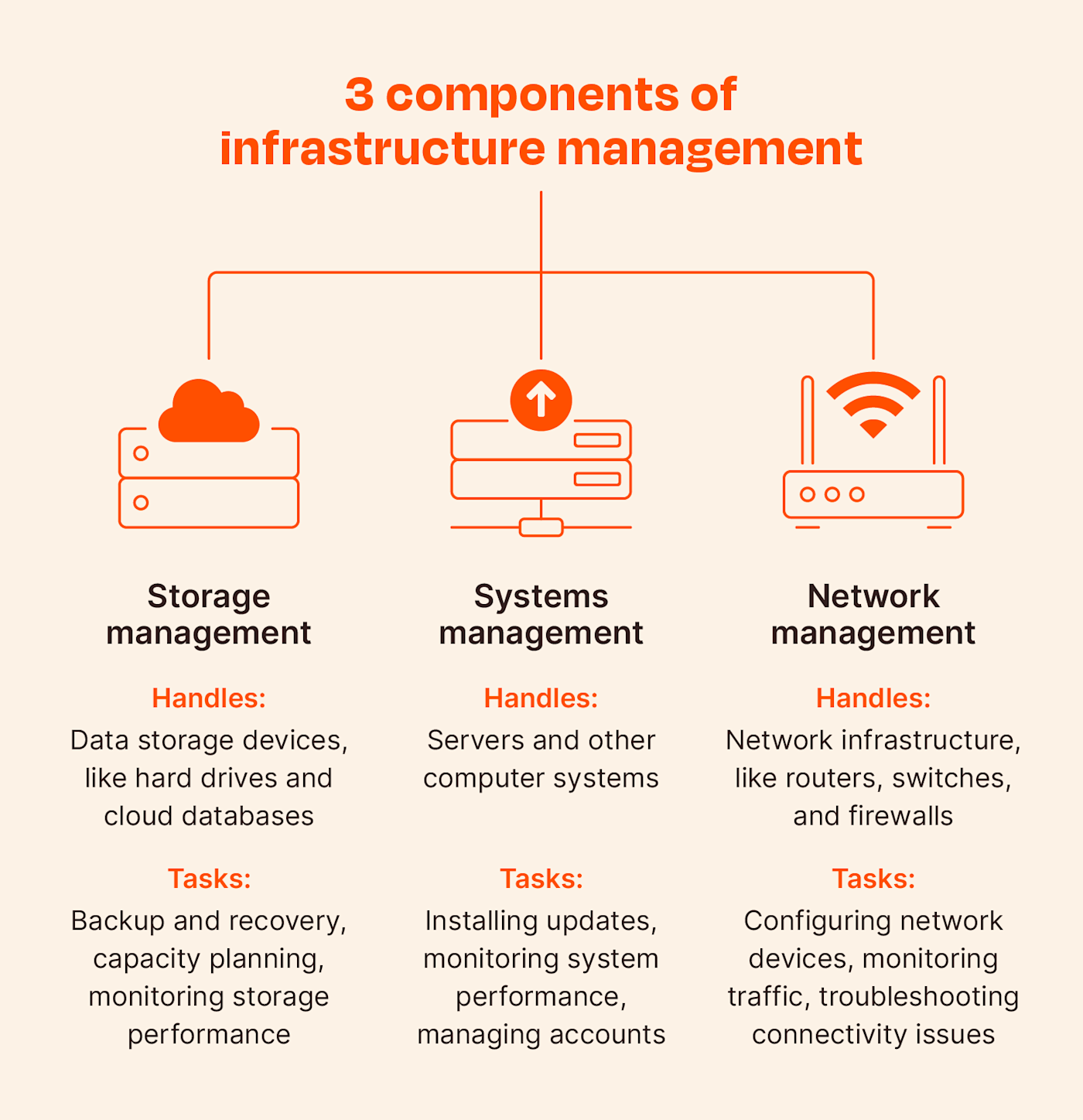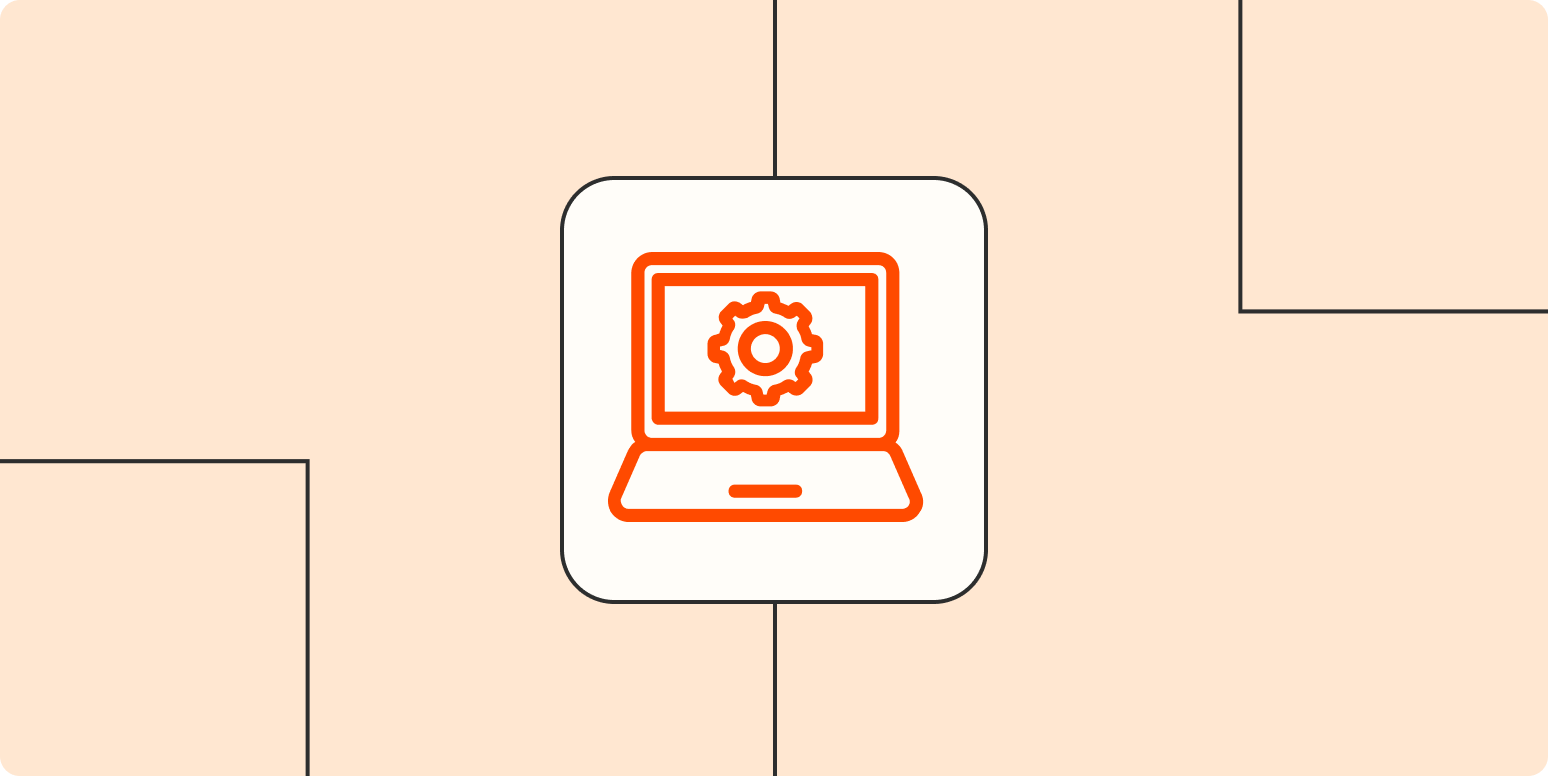When I hear the word “infrastructure,” the first thing that pops into my head is a map of every road, bridge, and waterway in the country. Obviously that’s not what people mean when they talk about infrastructure management in business, but it’s also not too terribly far off.
In business, infrastructure refers to all of the technological components that make up a company’s information technology (IT) systems. It includes things like computers, servers, and routers, as well as the networks that connect them—the IT system’s roads and bridges, if you will.
What is IT infrastructure?
Automate your IT management workflows
The term “IT infrastructure” refers to the physical hardware and software components that are used to support an organization’s information technology (IT) operations. This includes things like servers, devices, networking equipment, and software applications. It also includes the network of systems and processes that are used to manage these IT resources.
IT managers are responsible for setting up, maintaining, and troubleshooting systems that can be grouped into six main categories.
Components of IT infrastructure
What is IT infrastructure management?
Infrastructure management is the process of keeping an organization’s IT infrastructure up and running smoothly. Sounds simple enough, but the list of tasks involved in achieving that outcome is long. The easiest way to think of infrastructure management is in three broad categories:
-
Storage management involves tasks like backup and recovery, capacity planning, and storage performance monitoring.
-
System management involves tasks like installing updates, monitoring system performance, and setting up and managing accounts.
-
Network management involves tasks like configuring network devices, installing firewalls, monitoring traffic, and troubleshooting connectivity issues.

Responsibilities of an infrastructure manager
Each infrastructure manager’s specific tasks will vary depending on a number of factors, like the size and shape of their organization’s networks and what component of their infrastructure they’re working on. But there are five broad responsibilities that all IT managers will encounter no matter what:
System security
What most people picture when they think of IT is cybersecurity, and rightfully so—it’s arguably the most important component of an IT manager’s job.
System security is applicable to all three broad infrastructure categories, not just systems management. A storage manager, for example, would still be responsible for the security of their organization’s storage facilities, whether they’re physical or in the cloud.
System security covers everything required to keep your infrastructure safe. That includes things like:
-
Installing anti-virus software and firewalls
-
Implementing good password practices
-
Encrypting sensitive files and communications
-
Setting up and monitoring alerts
-
Establishing physical security in your office or storage facilities
Keeping track of all of these manually will start to feel a bit like Whac-a-Mole unless you automate at least some of your cybersecurity processes. For example, you might have all of your documents automatically sent to AnonyFlow for encryption instead of counting on employees to do it themselves.
Standards and practices
The IT manager is also responsible for creating and enacting processes that ensure the entire company is utilizing their IT properly.
There can be standards and practices (S&P) in just about any task or project within an organization, but when it comes to IT, S&P largely consists of things like:
-
Vetting employees, third-party contractors, and other company partners before allowing access to critical systems
-
Training and enforcing the company’s IT maintenance and security processes (and, ideally, requiring refresher training and testing to make sure all employees remain up to date on their IT process knowledge)
-
Ensuring that all data and documents are disposed of properly and completely, either by correctly destroying digital files or ensuring physical documents are thoroughly shredded
Documentation and reporting
It’s almost impossible to properly enact IT standards and practices without a rigorous documentation process. The IT manager is responsible for:
-
Creating training materials
-
Maintaining IT system logs
-
Tracking and reporting on system performance
-
Writing incident reports when a security issue or breach takes place
The main reason that reporting is so important is that it allows you to gain actionable insights into how different elements of your infrastructure are performing. For example, if you only address network performance when there’s a problem, you’ll miss key patterns and indicators that could explain what’s causing it.
Performance monitoring
There are a lot of different areas for an IT manager to monitor, and like system security, which reports are important will depend on factors unique to the organization and its infrastructure. Some popular IT KPIs include:
-
Outage data (frequency, mean time to resolve, total downtime)
-
Storage and utilization (RAM utilization, available storage space)
-
Network performance (upload and download speeds, network latency)
Depending on the organization, an IT manager may also be responsible for tracking and reporting on IT costs either individually or in partnership with the finance department.
Systems development
IT managers are responsible for creating new systems as needs arise. Since IT equipment and processes can be expensive, this is more complicated than just trying out new stuff to see if it works. Especially in large organizations or those that handle very sensitive data, the IT manager is responsible for creating and following a detailed process for implementing new tools.
In most cases, the IT manager won’t be solely responsible for systems development. It’s more likely that an organization’s developers will be most heavily involved in the creation of the system itself, and the IT manager’s job will be to ensure that the development team follows the correct procedures for designing, testing, and implementing each new system.

While smaller companies and solo operations can usually get by with just a few of the things on this list, IT management tasks start to pile up quickly as your organization grows. Combine solid employee cybersecurity training, an investment in IT software and personnel, and regular IT audits to keep your organization’s systems running smoothly.
Need Any Technology Assistance? Call Pursho @ 0731-6725516





